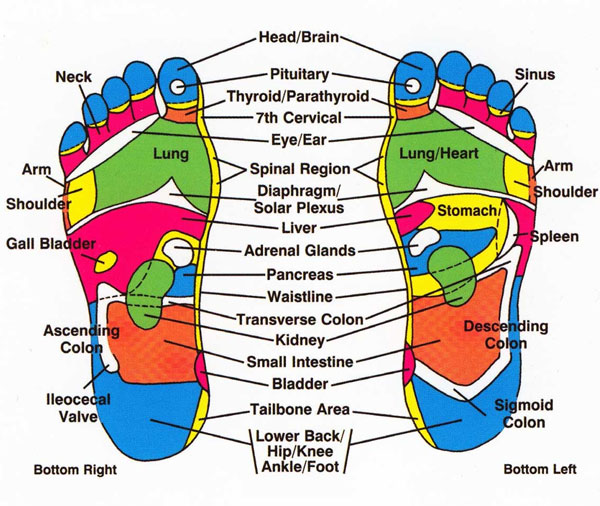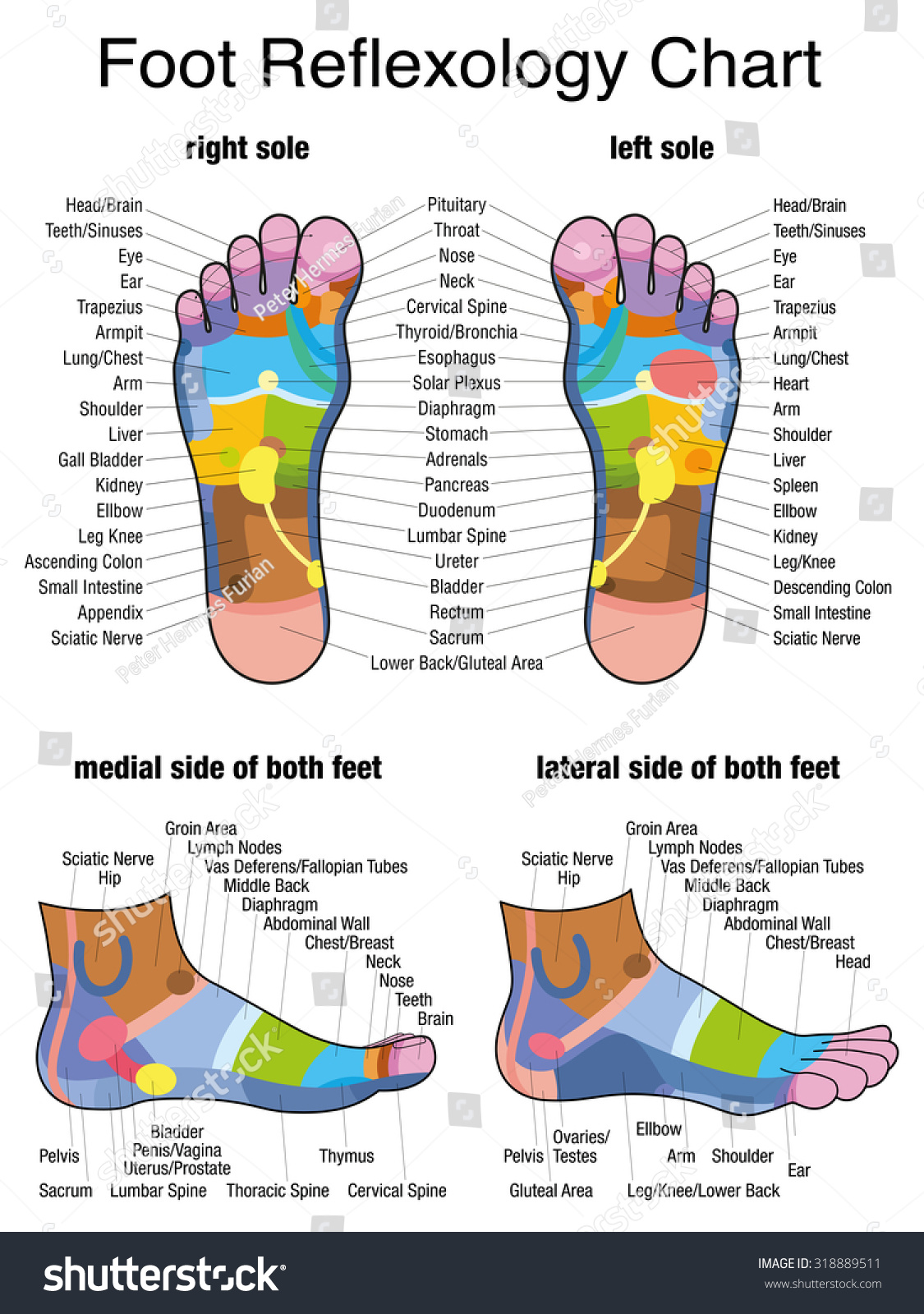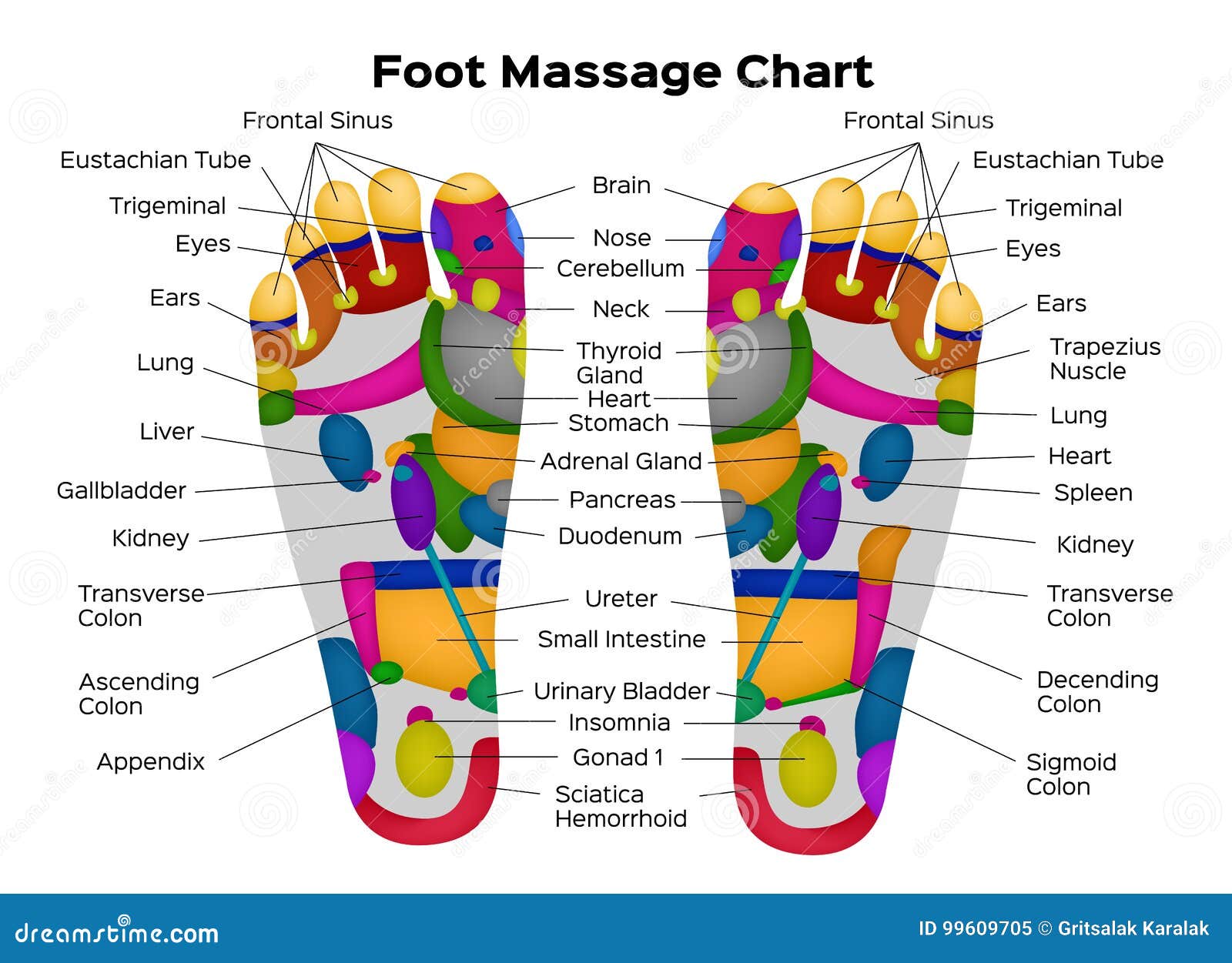
Foot reflexology chart inside and outside view of the feet with
Anatomy is a road map. Most structures in the foot are fairly superficial and can be easily palpated. Anatomical structures (tendons, bones, joints, etc) tend to hurt exactly where they are injured or inflamed. Therefore a basic understanding of surface anatomy allows the clinician to quickly establish the diagnosis or at least narrow the.

The Foot Understanding Zones & Reflexes Women Fitness
Common causes of foot pain include plantar fasciitis, bunions, flat feet, heel spurs, mallet toe, metatarsalgia, claw toe, and Morton's neuroma. If your feet hurt, there are effective ways to ease the pain. Some conditions specific to the foot can cause pain, less movement, or instability. Verywell / Alexandra Gordon.

Reflex Zones Of The Feet Soles And Side Views Accurate Description
Tarsals. The tarsals are a group of seven bones close to the ankle. The proximal tarsal bones are the talus and the calcaneus, which is the largest bone of the foot. The talus is on top of the.

Foot Reflexology Chart What Is It and How Do I Use It? PureWow
Summary. The foot is an intricate part of the body, consisting of 26 bones, 33 joints, 107 ligaments, and 19 muscles. Scientists group the bones of the foot into the phalanges, tarsal bones, and.

Foot reflexology chart with accurate description of the corresponding
Familiarize yourself with the basic foot reflexology chart. Starting out, learn about the basic areas on a foot reflexology chart. This outlines the major organs locations on the foot. The right foot is associated with the right part of the body and left foot is associated with the left side of the body.

Foot Reflexology And Body Organs Healthy Tactic
Foot reflexology chart. A foot reflexology chart shows the acupressure points on the feet soles and their link to organs. . Foot reflexology chart in different styles, that illustrate the acupressure points /reflex zones on the feet soles and their link to organs.

Foot Reflexology Chart with Description of the Internal Organs and Body
To start a foot reflexology massage, begin with the toes. You should massage with the rotating thumb technique. Using your thumbs, press in, rotate, lift, and then move, focusing on covering only small areas of the body at a time. Massage the both feet. Move on to the tops and sides of your feet.

Reflexology Foot Map Connecting Hypnotherapy...
Foot Reflexology Sole Chart. The foot reflexology sole map is comparatively really easy to understand and learn. It mentions the body organs exactly the way they are inside the body. It covers your eyes, ears, lungs, heart, stomach, solar plexus, spleen, teeth, top of the head, pancreas and your entire legs.

Reflexology, feet, hands, ears, connection, organ pain from the feet
Foot. The foot is the lowermost point of the human leg. The foot's shape, along with the body's natural balance-keeping systems, make humans capable of not only walking, but also running.

Reflexology Foot Map r/reflexology
This outlines the major organs locations on the foot. The right foot is associated with the right part of the body and left foot is associated with the left side of the body.. find whatever part of the body that you want to activate and work on and apply the treatment there like a map. Advertisement. 3. Learn about a sole chart.

Reflexology Foot Map — Hitchin Reflexology
Let's take a look at this foot reflexology chart. Image source. Each zone of the foot massage chart corresponds to a specific organ. The right foot corresponds to the right side of the body and the left to the left. The pads of the four nail phalanges of the toes (except for the pads of the thumbs) are associated with the frontal and.

Foot Reflexology Chart Accurate Description Corresponding Stock Vector
LABELED DIAGRAMS. Figure 1. Sections and Bones of the Foot A. Lateral (Left) B. Anterior (Right) Figure 2. Compartments of the Foot A. Cut Section through Mid-Foot. Figure 3. First Layer of the Foot A. Plantar View of Right Foot. Figure 4. Second Layer of the Foot A. Plantar View of Right Foot.

Vector Illustration of Soles of Feet with Marked by Reflexology Zones
The location of the reflexes for every organ in the body can be seen on the reflexology foot map. Some reflexes, such as the heart on the left foot and the liver on the right, appear on only one foot. This is because there is only one of each organ and they lie on that side of the body. In many instances, there are matching points on both feet.

Reflexology👣Areas On Your Feet That Practitioners Believe Correspond
Pronation is the motion of the foot during the gait cycle wherein the foot rolls inward to displace shock. When you run or jump, the foot strikes the ground primarily against the outside edge of the foot with the ankles turned inward. As the weight of your body is spread across the foot, the foot and ankle turn inward and the arch flattens out.

Foot Reflexology Chart stock vector. Illustration of physical 96620033
The foot is a part of vertebrate anatomy which serves the purpose of supporting the animal's weight and allowing for locomotion on land. In humans, the foot is one of the most complex structures in the body. It is made up of over 100 moving parts - bones, muscles, tendons, and ligaments designed to allow the foot to balance the body's.

Foot reflexology chart and internal organs Reflexology foot chart
The muscles of the foot are located mainly in the sole of the foot and divided into a central (medial) group and a group on either side (lateral). The muscles at the top of the foot fan out to supply the individual toes. The tendons in the foot are thick bands that connect muscles to bones. When the muscles tighten (contract) they pull on the.